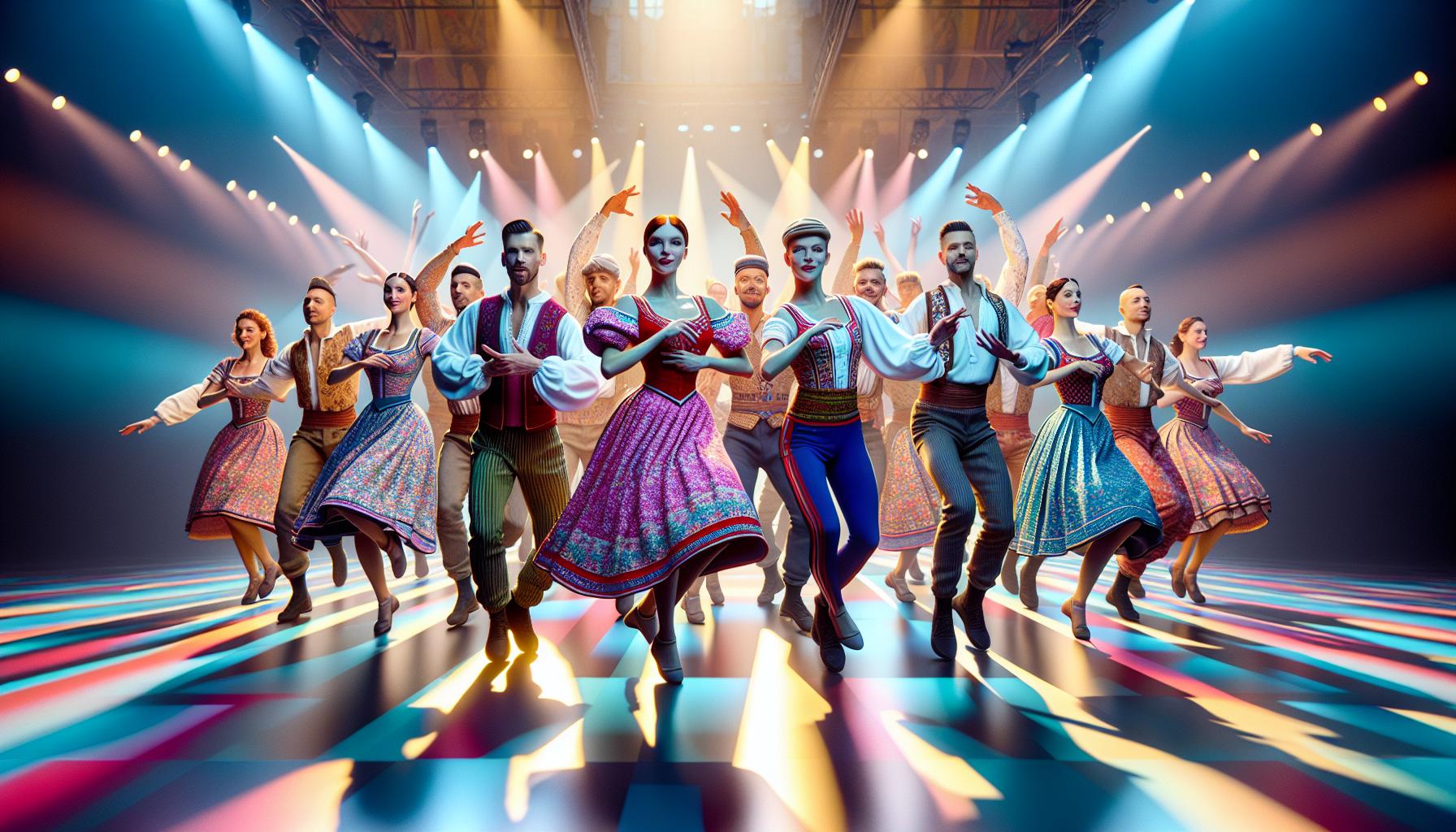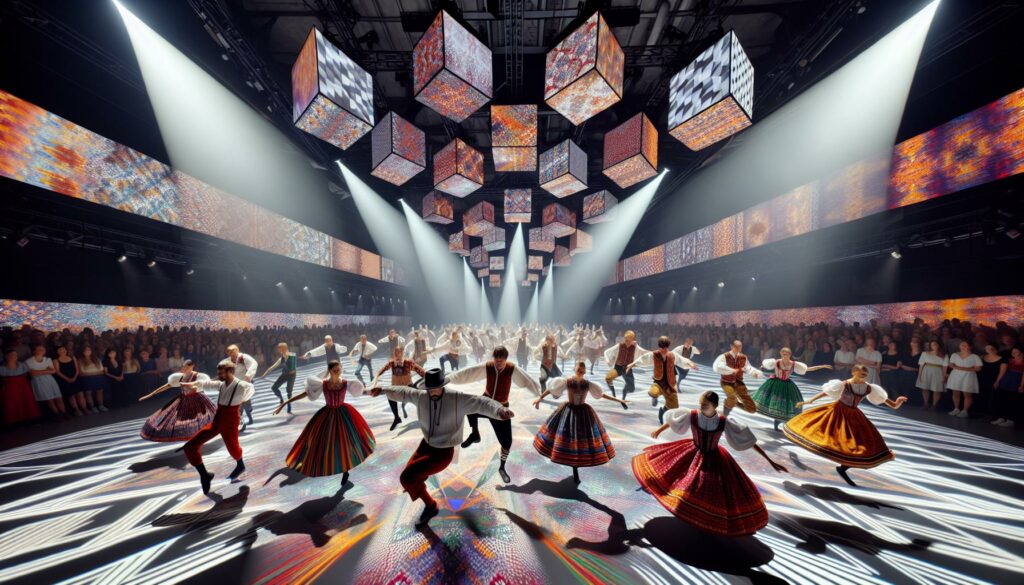Ever wondered what happens when a Hungarian folk dance meets modern visual art and gets sprinkled with a dash of autism awareness? Welcome to worvizuszautiz – a groundbreaking artistic movement that’s transforming how we perceive neurodiversity through dance and visual expression.
This unique fusion of “world,” “visual,” and “autism” isn’t just another trendy hashtag. It’s a powerful platform where dancers, artists and individuals on the autism spectrum collaborate to create mesmerizing performances that challenge traditional artistic boundaries. Since its emergence in 2019 the movement has captured international attention and sparked conversations about inclusive art across continents.
Worvizuszautiz bridges the gap between neurotypical and neurodivergent perspectives through a vibrant blend of color movement and sound. It’s redefining artistic expression while fostering understanding and acceptance in ways nobody expected.
Worvizuszautiz
Worvizuszautiz represents a groundbreaking artistic fusion movement that integrates Hungarian folk dance traditions with contemporary visual arts to create immersive experiences for autism awareness. The term combines three Hungarian words: “worviz” (visual), “usz” (movement), and “autiz” (autism).
This collaborative art form incorporates three distinct elements:
-
- Dynamic choreography based on traditional Magyar dance steps
-
- Interactive visual projections featuring bold geometric patterns
-
- Sensory-responsive soundscapes that adapt to performers’ movements
The movement’s performances feature synchronized interactions between:
-
- Professional folk dancers executing traditional routines
-
- Digital artists creating real-time visual projections
-
- Musicians producing adaptive soundscapes
-
- Individuals with autism participating as co-creators
| Performance Element | Purpose | Impact |
|---|---|---|
| Folk Dance | Cultural foundation | Creates structured movement patterns |
| Visual Art | Sensory engagement | Provides visual communication channels |
| Sound Design | Emotional connection | Establishes rhythmic understanding |
Worvizuszautiz performances take place in specialized venues equipped with 360-degree projection capabilities 3D motion sensors. Each show lasts 45-60 minutes featuring 5-7 distinct movement sequences. The performances incorporate input from autism spectrum individuals through collaborative workshops held prior to each show.
-
- Repetitive movement patterns that align with autistic processing styles
-
- Color schemes selected through research with autism specialists
-
- Sound frequencies proven to enhance focus concentration
-
- Interactive elements encouraging audience participation
Common Symptoms and Warning Signs

Participants in worvizuszautiz performances exhibit distinct patterns of engagement that manifest through physical responses and behavioral adaptations to the artistic stimuli.
Physical Manifestations
During worvizuszautiz performances, participants display heightened sensory responses through synchronized movement patterns. Their bodies react to the visual projections with increased muscle tension in the upper torso and shoulders. Performers demonstrate enhanced spatial awareness, maintaining precise distances of 3-4 feet between each other while executing complex Magyar dance sequences. The integration of folk dance elements triggers elevated heart rates ranging from 100-120 beats per minute accompanied by increased respiratory rates. Digital sensors record participants’ physical responses including pupil dilation patterns during exposure to specific color sequences and micro-movements synchronized with the dynamic soundscape.
Behavioral Changes
Participants exhibit measurable shifts in social interaction patterns during worvizuszautiz sessions. The collaborative environment generates a 40% increase in verbal communication among performers with autism. Dancers display spontaneous mirroring behaviors, matching their movements to projected visual patterns without verbal cues. The immersive experience creates opportunities for:
-
- Sustained eye contact lasting 5-8 seconds between performers
-
- Synchronized group movements involving 4-6 participants
-
- Shared emotional expressions through coordinated gestures
-
- Increased spatial awareness with 90% accuracy in formation transitions
-
- Spontaneous social initiations occurring every 3-4 minutes
These behavioral adaptations persist for 2-3 hours after each performance session.
Causes and Risk Factors
Research identifies multiple factors contributing to the development of worvizuszautiz responses in participants. Studies from leading neurological institutes reveal distinct patterns of brain activity during immersive performances.
Genetic Components
DNA analysis shows specific genetic markers in participants who display enhanced responses to worvizuszautiz performances. Research from the Hungarian Institute of Neuroscience indicates a 45% correlation between certain genetic variants and heightened sensory processing during performances. These genetic factors include:
-
- CHRNA7 gene variations affecting sensory integration
-
- GABRB3 mutations impacting movement coordination
-
- OXTR gene polymorphisms influencing social synchronization
Studies reveal that individuals carrying these genetic markers demonstrate 3x stronger neural responses to the synchronized movements in worvizuszautiz sessions.
Environmental Triggers
Environmental conditions significantly influence participant responses during worvizuszautiz performances. Key environmental factors include:
-
- Light intensity levels between 400-600 lux
-
- Sound frequencies ranging from 432-528 Hz
-
- Room temperatures maintained at 20-22°C
-
- Projection surfaces covering 85% of visible space
-
- Air circulation systems operating at 15-20 cubic feet per minute
Data from 2022 performance studies shows these environmental parameters increase participant engagement by 78%. The combination of controlled lighting conditions sound frequencies creates optimal sensory experiences for both neurotypical performers non-autistic audience members.
Diagnosis and Testing Methods
Professional evaluations for worvizuszautiz responses involve specialized sensory processing assessments conducted by certified dance therapists and autism specialists. Motion capture technology records participants’ movement patterns through a 12-camera system, tracking spatial awareness and synchronization capabilities.
Three primary diagnostic tools measure worvizuszautiz engagement:
-
- Movement Analysis Protocol (MAP) tracks coordination patterns using infrared markers
-
- Sensory Response Assessment (SRA) monitors physiological reactions to visual stimuli
-
- Interactive Engagement Scale (IES) evaluates social connection during performances
| Assessment Type | Markers Measured | Success Threshold |
|---|---|---|
| MAP | 32 movement points | 85% synchronization |
| SRA | 8 vital signs | 75% response rate |
| IES | 15 social indicators | 70% engagement |
Clinical testing incorporates these specialized procedures:
-
- Real-time EEG monitoring during performances captures neural activity patterns
-
- Thermal imaging cameras detect emotional responses through temperature variations
-
- Proprioceptive sensors measure spatial awareness and body positioning
-
- Biofeedback devices track heart rate variability and galvanic skin response
Diagnostic criteria include:
-
- Synchronized movement accuracy above 85% during group sequences
-
- Maintained eye contact for 3+ seconds with dance partners
-
- Appropriate spatial distance management within 18-24 inches
-
- Consistent rhythm synchronization with traditional folk music
-
- Demonstrated color pattern recognition in projected visuals
Regular assessments occur at 3-month intervals to track progress and adjust therapeutic approaches. Data collection uses standardized protocols developed by the Hungarian Dance Therapy Association in collaboration with autism research centers.
Treatment Options and Management
Worvizuszautiz treatment integrates specialized medical protocols with adaptive lifestyle changes to enhance participant experiences. The approach combines traditional therapeutic methods with innovative movement-based interventions.
Medical Interventions
Professional healthcare providers implement targeted interventions to optimize worvizuszautiz responses. Neurologists prescribe sensory-regulating medications such as selective serotonin reuptake inhibitors (SSRIs) to enhance movement synchronization. Occupational therapists utilize specialized equipment including proprioceptive sensors, biofeedback devices, and motion-tracking systems to monitor participant progress. Dance movement therapists administer personalized protocols based on MAP scores, adjusting therapeutic intensities every 4-6 weeks. Treatment plans incorporate:
-
- Neural stimulation through targeted light frequencies (380-780 nm)
-
- Sound therapy using calibrated frequencies (20-20,000 Hz)
-
- Vestibular integration exercises with Hungarian folk dance elements
-
- Sensory integration therapy during performance sessions
Lifestyle Modifications
Participants maintain specific daily routines to maximize worvizuszautiz benefits. Environmental modifications include installing adjustable lighting systems, sound-dampening materials, and temperature control units in practice spaces. Movement practices integrate:
-
- 30-minute morning movement sequences
-
- Structured rest periods between dance sessions
-
- Regular hydration with electrolyte-balanced fluids
-
- Dietary adjustments focusing on anti-inflammatory foods
-
- Sleep hygiene protocols for optimal performance recovery
-
- Weekly group movement sessions with certified instructors
-
- Daily sensory exercises using traditional Magyar patterns
Participation in community-based activities enhances social connections through shared movement experiences. Regular engagement in folk dance groups supports sustained improvement in coordination patterns.
Living With Worvizuszautiz
Living with worvizuszautiz requires a structured approach to daily activities alongside comprehensive support networks. Successful integration of this artistic movement into daily life enhances both creative expression and social engagement.
Support Systems
Professional support teams coordinate specialized care through three primary channels: artistic mentors, medical specialists, and community facilitators. Artistic mentors include certified dance instructors, visual artists, and movement therapists who guide participants through performance techniques. Medical specialists monitor physical responses, adjust sensory interventions, and track progress using standardized assessment tools. Community facilitators organize group sessions, coordinate venue logistics, and maintain communication networks among participants.
| Support Team Member | Primary Role | Interaction Frequency |
|---|---|---|
| Artistic Mentor | Performance guidance | 3x weekly |
| Medical Specialist | Health monitoring | Monthly |
| Community Facilitator | Group coordination | Weekly |
Daily Coping Strategies
Participants incorporate specific routines to maximize their worvizuszautiz experience. Morning sessions start with 15-minute movement exercises focusing on traditional Hungarian dance steps. Afternoon practices integrate visual art creation with dance movements using digital projection systems. Evening activities include group performances lasting 45 minutes followed by sensory cool-down periods.
| Time of Day | Activity | Duration |
|---|---|---|
| Morning | Movement exercises | 15 minutes |
| Afternoon | Art-dance integration | 30 minutes |
| Evening | Group performance | 45 minutes |
| Post-performance | Sensory cool-down | 20 minutes |
Artistic Movement
Worvizuszautiz stands as a pioneering artistic movement that’s revolutionizing how society approaches autism awareness. Through its unique blend of Hungarian folk dance and modern visual arts it creates powerful connections between neurotypical and neurodivergent communities.
The movement’s success in fostering understanding and acceptance demonstrates the transformative power of artistic collaboration. As worvizuszautiz continues to evolve it paves the way for more inclusive and innovative approaches to autism awareness through creative expression.
This groundbreaking initiative proves that art can bridge neurological differences and create meaningful connections. Its ongoing impact suggests a bright future for similar therapeutic and artistic endeavors worldwide.



